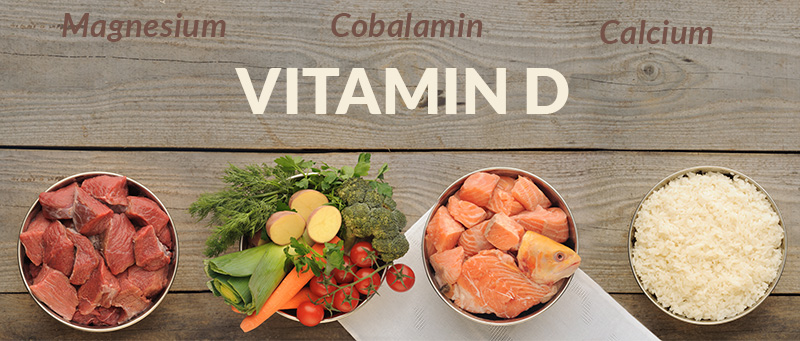
Cancer
It has been reported that dogs and cats with lymphoma (2,11), mast cell tumors (5), hemangiosarcoma, carcinoma, histiocytic sarcoma, and other cancers (10,11,12) all have 25vitD values below 40ng/mL. The relative risk of having cancer increases to almost 4x when 25vitD values are below 40ng/mL.
Chronic Enteropathy (IBD)
Disease severity and the incidence of chronic enteropathy (CE) in both cats and dogs increases substantially when 25vitD values fall below 40ng/mL (4,11). In CE, survivors vs non-survivors can be separated when 25vitD values fall below 30ng/mL (15,17,23,29).
Heart Disease
Congestive heart disease is more prevalent in dogs with 25vitD values below 40ng/mL and there is a 2.6x increase in cardiovascular events (9). Heart remodeling in chronic valvular heart disease worsens as 25vitD values fall below 30 ng/mL (16).
Chronic Kidney Disease
Studies show acute and chronic kidney disease is more prevalent in dogs with 25vitD values below 40ng/mL (1,2). As 25vitD values fall below 40ng/mL, creatinine increases dramatically (19).
Hospital Mortality
Hospitalized cats with 25vitD levels below 40ng/mL have an 8x higher incidence of dying (13) and hospitalized dogs with 25vitD levels below 33ng/mL have a 7x higher incidence of dying (28).
Calcitriol Drops
25vitD is the substrate for the enzymatic conversion to the active hormone calcitriol. When 25vitD values fall below 40ng/mL, there is difficulty in maintaining proper calcitriol levels (1).
As a result, ionized calcium can fall below the reference interval (4,26). Maintaining proper ionized calcium levels is vital for muscle and nerve function.
References:
For references, please refer to the Growing Body of Evidence. VDI has concluded that the body of evidence supports a high risk of disease and/or death when 25VitD levels are below 40ng/mL (deficient).
